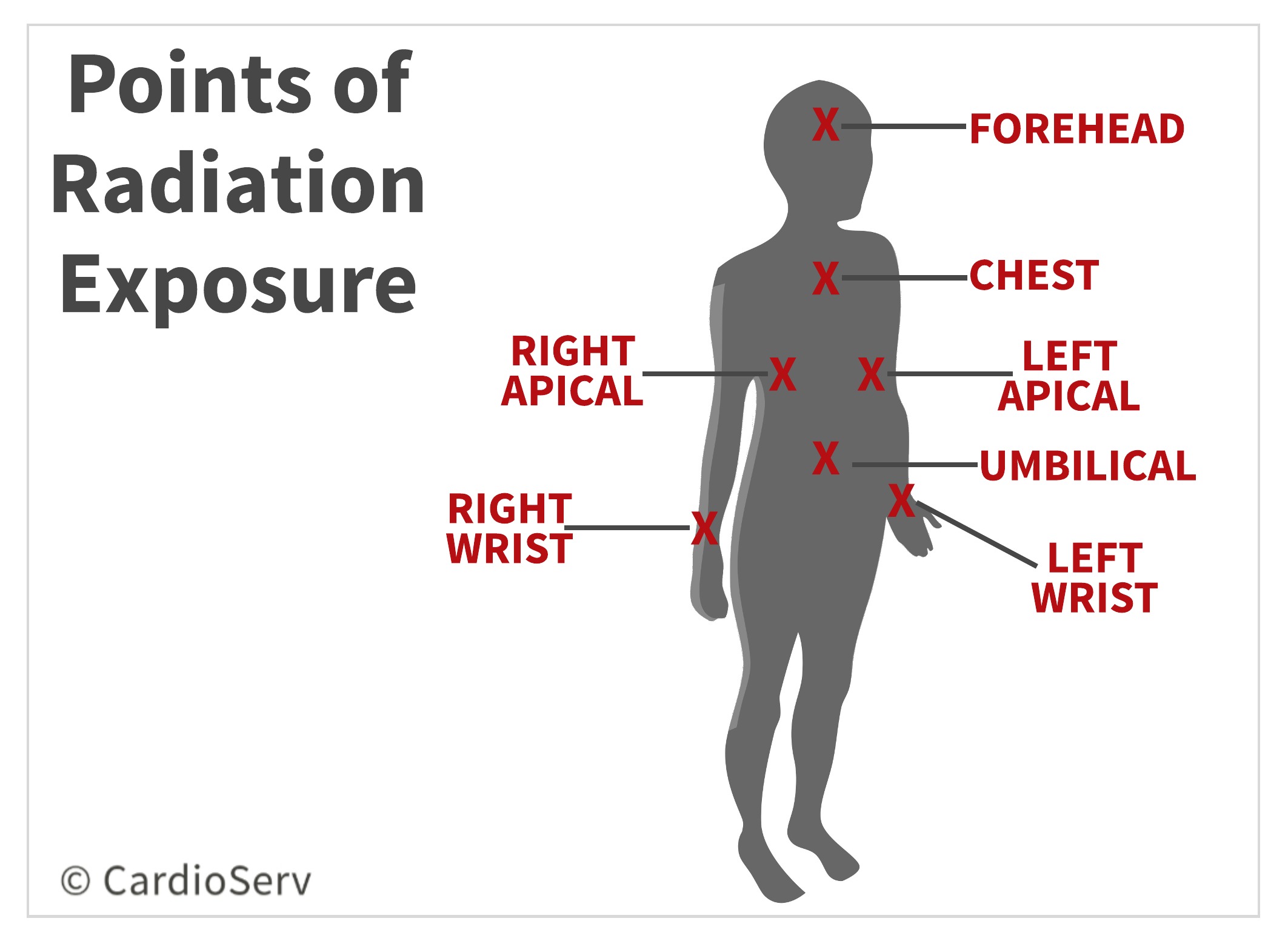If you work in a cardiology lab you know the challenges of scheduling patients for both their echocardiogram and nuclear stress test. The stress test is already a long day for the patient and so often, in an effort to accommodate our patients, we schedule both the echo and the stress test on the same day. The patient receives their stress test and then makes their way over to the echo lab….sound familiar? If you work in a lab with this kind of workflow, you most likely are exposed to radiation in doses exceeding the legally mandated annual occupational exposure limits! That means….STOP…review the latest research on sonographer radiation exposure and immediately make changes! It’s great that you want to accommodate your patient, but your own health is of paramount importance, especially if you are placing yourself at risk for cancer and radiation exposure.
Patients that have a nuclear stress test (myocardial perfusion imaging) are injected with isotopes at rest and at stress. The patient is considered “hot” because the isotope continues to emit radiation. This means that the patient now becomes a source for radiation exposure. Everything we know about radiation exposure would want to make us stay as far away as possible, but what do we do… we pull up a chair, sit real close and scan them for 40 minutes!!
In 2014 the ASE released a white paper on Radiation Safety Recommendations for the Cardiac Sonographer. The paper warned of potential radiation exposure risk and recommended scanning patients BEFORE they are injected with the isotope OR to scan them another day. The paper urged for sonographers to wear dosimetry badges/rings (radiation-monitoring badges) and to implement radiation safety policies within their lab. At that time, the writing committee acknowledged the lack of data specific to cardiac sonographers exposure to radiation.
Also that year, in 2014, the Intersocietal Accreditation Commission updated the echo guidelines and standards to state: “Sonographers may be exposed to significant levels of radiation from patients who have both a nuclear test and an echocardiogram on the same day, and also from spending time in catheterization/hybrid laboratories. For this reason, it is recommended that facilities have a formal policy to address radiation safety for sonographers.”
Fast forward to 2018, and four years after releasing recommendations due to ‘potential’ harm the JASE released data from a clinical investigation that studied cardiac sonographer radiation exposure from scanning patients that have been injected with isotopes for stress testing.
(Massalha, et al, 2018)
The study was actually very cool. They placed 7 dosimetry badges all over the sonographer’s body:

Next they divided the 40 patients included in the study into 4 groups of 10 patients. The first group was a control group, the patient received no isotope prior to scanning. The other three groups all scanned patients after they had completed their nuclear stress test (rest and stress isotope had been administered). With these three groups, one group scan left handed and the other two groups scan right handed. The right handed groups included one group of experienced physicians and one group of sonographers to assess if the experience (and hence exposure time) had any affect on outcomes.
At the end of the study, the results showed considerable radiation exposure with higher reading for right handed scanners due to the closer proximity to the patient while scanning. If you scan (left or right handed) 20 “hot” patients in an entire year you should be wearing a dosimetry badge and start tracking your radiation exposure. Think about it, that’s less than one patient every two weeks!
What was of concern to me, and hopefully a wake up call to all cardiac sonographers, was the data that demonstrated scanning 20 same-day nuclear stress patients a week (just 4 patients a day) places sonographers at risk for exceeding legally mandated annual occupational exposure limits!! The paper is absolutely worth reading, so please download the article and read the entire paper and encourage as many sonographers, administrators and physicians to read the article too!
Other Articles on Radiation Safety:

Judith Buckland, MBA, RDCS, FASE
Stay Connected: Facebook, Twitter, Instagram, LinkedIn
Intersocietal Accreditation Commission. (2017, revised 2018). IAC Standards and Guidelines for Adult Echocardiography Accreditation. Retrieved from https://www.intersocietal.org/echo/standards/IACAdultEchocardiographyStandards2017.pdf.
Massalha, S., MD, Lugassi, R., BSc, Raysberg, E., MD, Koskosi, A., MRT (N), Lechtenberg, G., BS, Israel, O., MD, & Kennedy, J., PhD. (2018). Evaluation of Staff Radiation Exposure during Transthoracic Echocardiography Close to Myocardial Perfusion Imaging. Journal of the American Society of Echocardiography,31(7), 811-816.
McIlwain, E., MHS, RCS, FASE, et al. (2014). Radiation Safety for the Cardiac Sonographer: Recommendations of the Radiation Safety Writing Group for the Council on Cardiovascular Sonography of the American Society of Echocardiography. Journal of the American Society of Echocardiography,27(8), 811-816. Retrieved from https://www.asecho.org/wp-content/uploads/2014/07/2014_RadiationSafety.pdf




Nov
2018
Nov
2018